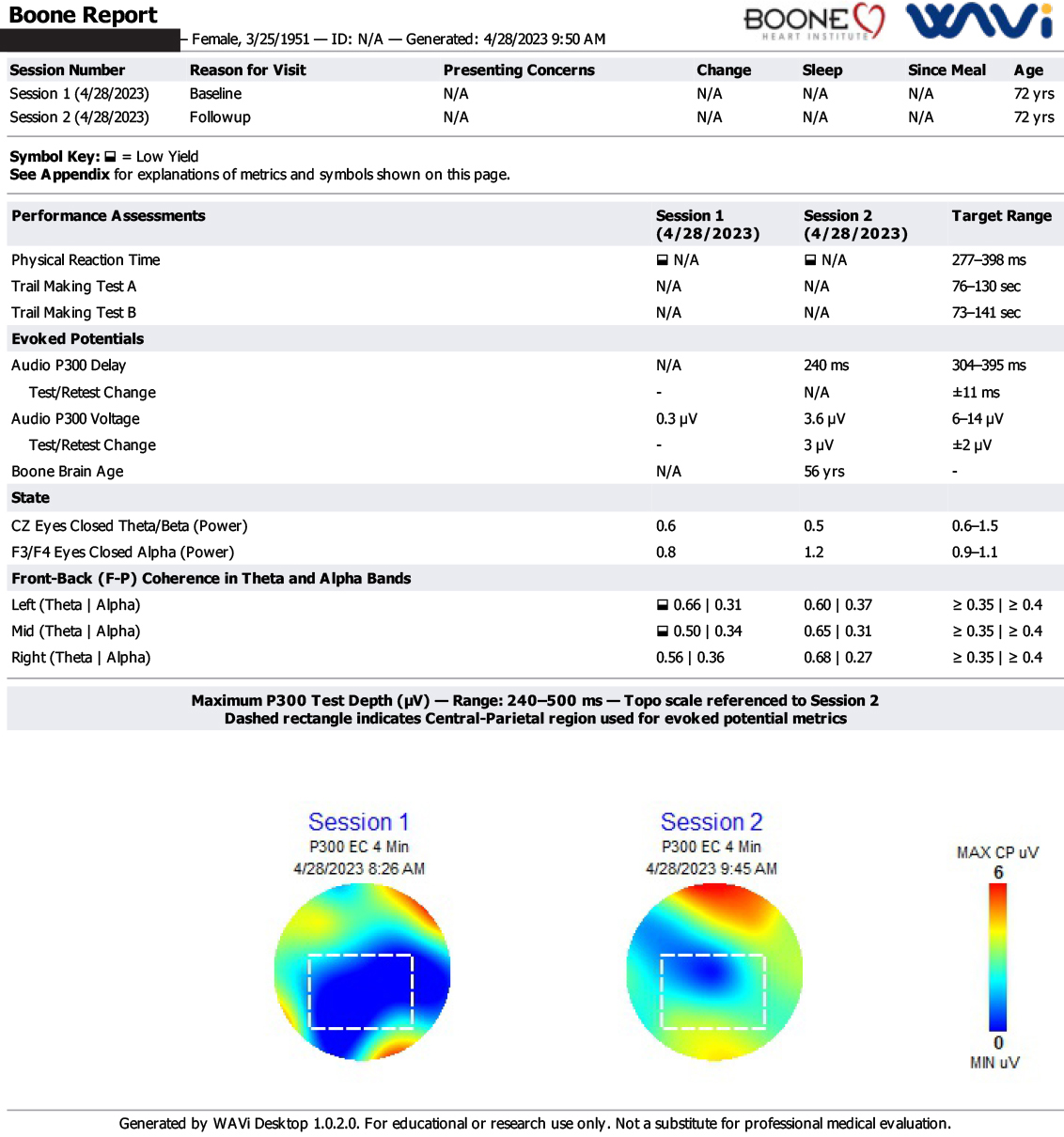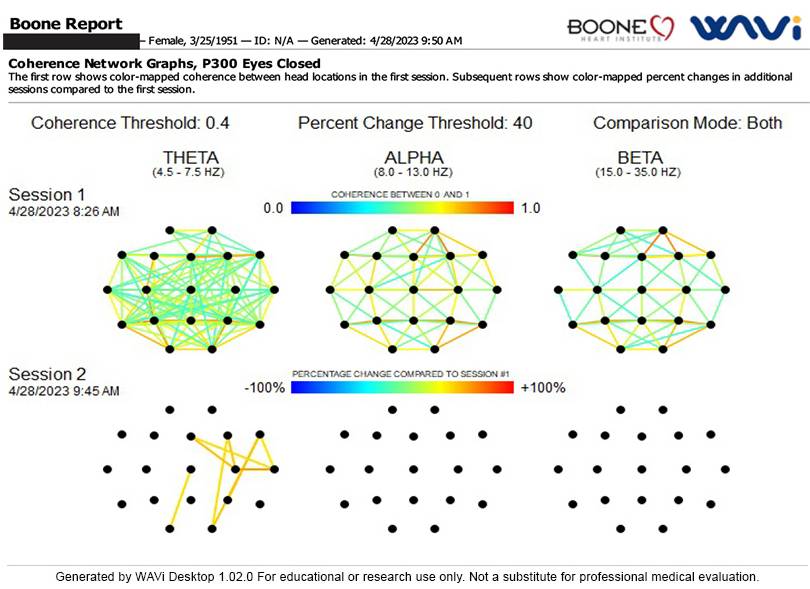Case Report on a Novel Application of Molecular Hydrogen Inhalation Therapy for Parkinson’s Disease and Persistent Post-Concussive Syndrome
Background
A 72-year-old female attendee at the AMMG conference in Doral, FL, with Parkinson’s disease (PD) and severe tremors, which were affecting her quality of life (i.e., difficulty eating, putting on makeup, using her phone, difficulty walking and talking). She stopped at the Hue Light USA booth. She stated that she had experienced a concussion within the last 6 months. Her symptoms included those often seen in persistent post-concussive syndrome (PPCS) and Parkinson’s disease (i.e., headaches, balance problems, light or noise sensitivity, anxiety, and depression). The attendee was interested in the potential of a non-invasive and non-pharmaceutical treatment option. The Hue Light USA booth, among other innovative technologies, demonstrated a Korean-manufactured high-flow molecular hydrogen inhalation unit. Simultaneously, we were evaluating brain function with a well-known multi test evaluation study. This author felt WAVi EEG/ERP would be a good testing device to determine acute changes because of its in-depth physiologic brain function evaluation, being non-invasive, and only having a 30-minute test period.
Evaluation
Mitchell J. Ghen, D.O., Ph.D. (Chief Medical Officer for HLUSA), spoke with the attendee, and she was interested and asked to be evaluated with the WAVi EEG/ERP brain assessment system that we were testing attendees with. After the results were shown to her, she was asked and agreed to use the Molecular Hydrogen Inhalation Device. She used the Hue Light H-2000 Molecular Hydrogen Inhalation Device. This device provides 2,100cc/min of hydrogen and oxygen in a ratio of 2:1. This rapid flow is obtained by using a high-flow nasal cannula. The baseline results identified a brain micro voltage output of 0.3 µV (age-related norm 6-14 µV). This type of finding can be seen in those with persistent post-concussive syndrome and other pathologies such as TBI, MCI, CVA, long COVID, Parkinson’s disease, and the like. Additionally, the central parietal and occipital regions of the brain were cool and significantly underactive prior to using the Molecular Hydrogen Inhalation Device. We attempted to test the P300 Auditory Evoked Response and Trail Making A & B, but due to the severity of her tremors, these measurements could not be ascertained.
After she had her baseline evaluation with the WAVi physiological brain test, she underwent 60 minutes of nasal cannula inhalation of molecular hydrogen at a rate of 2,100cc per minute. She tolerated the hydrogen with no reported side effects.
The WAVi was then repeated, and the results are no less than spectacular. See below comparison of 60-minute treatment.

Discussion
Molecular hydrogen inhalation therapy involves inhaling a mixture of hydrogen and oxygen through a nasal cannula. The ratio is 2 hydrogen molecules to 1 oxygen molecule. This therapy has gained attention due to its potential anti-oxidative, anti-inflammatory, and apoptosis-modulating properties.
Many research papers have reported that molecular hydrogen inhalation therapy has potential therapeutic benefits, as noted above. Like carbon dioxide, hydrogen ions in molecular hydrogen inhalation therapy, in the presence of anaerobic metabolism, produce metabolic acidosis. The resulting decrease in pH causes vasodilation, which, in turn, increases cerebral circulation. These findings have led to molecular hydrogen inhalation therapy being used for several neurological disorders, such as Parkinson’s disease, CVA, dementia, and hypoperfusion disorders.
Results
Many disorders, both acute and chronic, can result in poor brain voltage. These include metabolic disorders as well. In cases of acute brain injury, improvement over time is typically expected by clinicians. However, in the case of Parkinson’s disease, which is chronic and progressive, medical intervention may not lead to notable improvements in voltage. Therefore, the author was surprised by the rapid 1200% increase in voltage that was observed in the attendee. This improvement was unexpected, given the chronic nature of the condition.
The improved brain voltage, which increased from .3 µV to 3.6 µV, is a marked positive indication of enhanced electrical activity within the brain.
Studies have suggested that oxidative stress is closely linked to the onset and progression of neurodegenerative disorders such as Parkinson’s and Alzheimer’s disease. However, anti-oxidation technologies, including molecular hydrogen inhalation, have been shown to not only reduce oxidative stress but also exhibit anti-inflammatory and vasodilatory effects. The prominent effect within these 60 minutes was most likely secondary to its vasodilation effect. However, the other properties of molecular hydrogen would likely improve the overall condition of this attendee with multiple treatments over time.

Conclusion
Molecular hydrogen inhalation therapy is a non-invasive treatment option that has the potential to improve neurological disorders due to its anti-inflammatory, anti-oxidative, and apoptosis-modulating properties, along with its vasodilating effects. It is the author’s contention that further evaluation and investigation of this treatment modality as an acute and chronic intervention is warranted.
References
Molecular hydrogen is a promising therapeutic agent for pulmonary disease
https://www.ncbi.nlm.nih.gov/pmc/articles/PMC8861563/
Randomized double-blind placebo-controlled trial of hydrogen inhalation for Parkinson’s disease: a pilot study
https://pubmed.ncbi.nlm.nih.gov/34319514/





